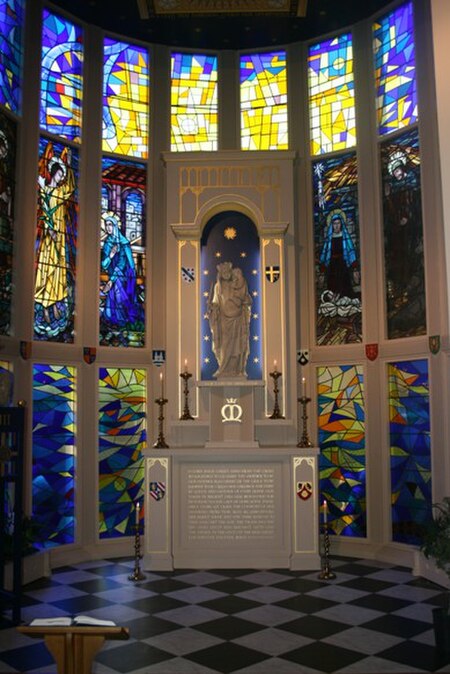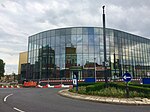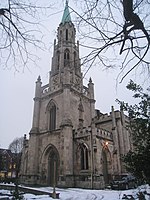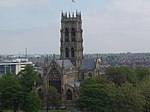Our Lady of Doncaster
Buildings and structures in DoncasterRoman Catholic churches in South YorkshireRoman Catholic shrines in the United KingdomShrines to the Virgin MaryStatues of the Madonna and Child ... and 1 more
Use British English from February 2020

Our Lady of Doncaster is a Marian shrine located in Doncaster, South Yorkshire, England. The original statue in the Carmelite friary was destroyed during the English Reformation. A modern shrine was erected in St Peter-in-Chains Church (or spelt as St Peter in Chains), Doncaster in 1973. The feast day of Our Lady of Doncaster is 4 June.
Excerpt from the Wikipedia article Our Lady of Doncaster (License: CC BY-SA 3.0, Authors, Images).Our Lady of Doncaster
Chequer Road, Doncaster Hyde Park
Geographical coordinates (GPS) Address Website External links Nearby Places Show on map
Geographical coordinates (GPS)
| Latitude | Longitude |
|---|---|
| N 53.51976 ° | E -1.1259 ° |
Address
St Peter-in-Chains (St Peter's Church)
Chequer Road
DN1 2AL Doncaster, Hyde Park
England, United Kingdom
Open on Google Maps







